The 13 Most Common Types of Mushrooms—and What to Do with Them
There are thousands of types of mushrooms, but you’ve probably only heard of a fraction of them. Mushrooms are unlike any other edible, which makes perfect sense given the fact that they occupy a completely different kingdom of living things. When raw, they’re rubbery to a point that almost isn’t appetizing, but a little heat and oil transforms them into something soft, yet toothsome—in short, irresistible.
There’s a lot more to these fungi than meets the eye: Mushrooms may be mostly water, but they’re rich in key nutrients like protein, potassium, and antioxidants. Plus, they’re packed with savory, meaty flavor without containing many calories. (Technically mushrooms aren’t plants, but they’re a great addition to plant-based diets.)
Mushrooms make a stellar side or pasta sauce or add-in, but larger varieties, like portabella or king oyster, make excellent substitutions for meat and seafood. They add umami flavor to savory pastries, work well with meat, and, when all else fails, make a solid pizza topping. Mushrooms work so hard and reap so many rewards it’s almost impossible to hate them.
Depending on your dish, though, different types of mushrooms fulfill different needs. If you’re looking to build a better burger, portabella is the way to go. In a pasta dish, however, cremini, shiitake, or porcini would be a better choice. We’ve broken down 13 common mushroom varieties, examined their differences, and highlighted the best ways to eat them.
Button Mushroom
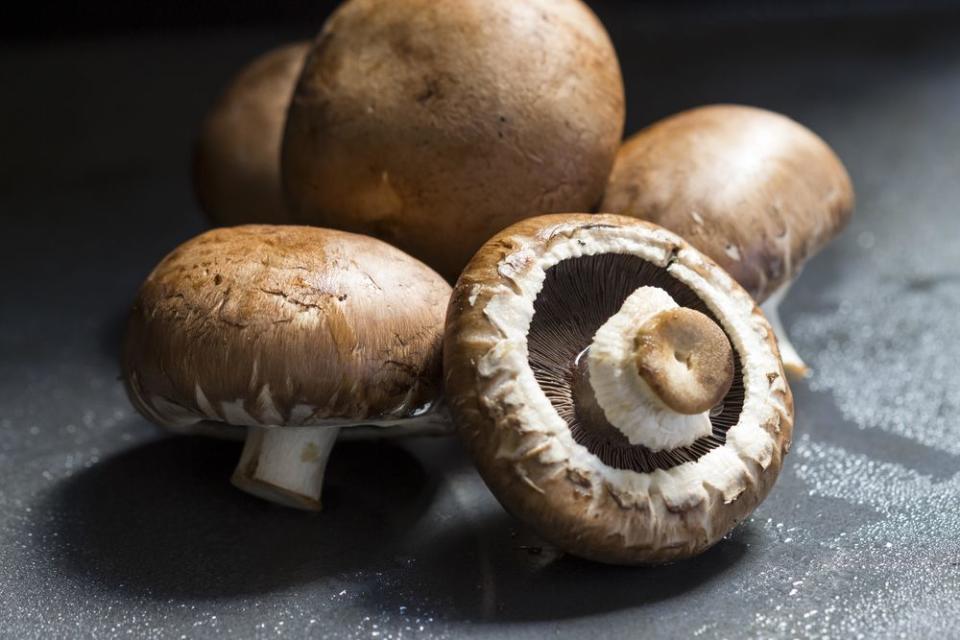
Also known as white mushrooms, these are one of the most common types. They’re cultivated in more than 70 countries, making them one of the world’s most widely eaten mushroom varieties. They’re mild enough to be enjoyed raw and will make a no-fuss addition to simple dishes.
Recipes to try: Pizza Bianca with Arugula, Bacon, and Mushrooms, Stuffed Mushrooms, Buttery Mirin Mushrooms.
Portabella Mushroom
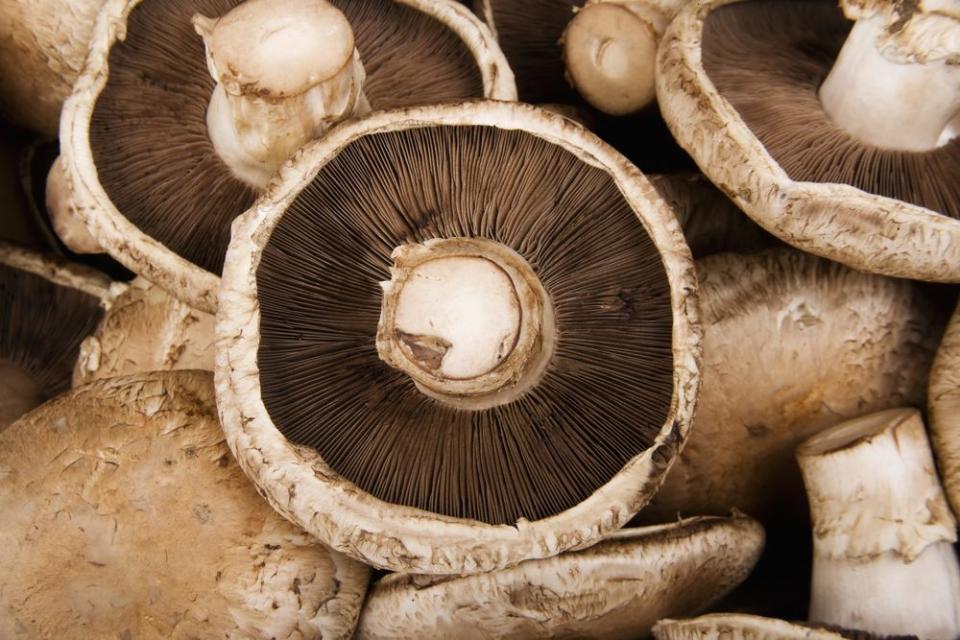
Portabellas are known for their large, dense caps and prominent gills and taste similar to cremini. Since, by mushroom terms, they’re huge, they can endure more intense cooking methods like grilling and baking, and their dense texture makes them a popular meat substitute.
Recipes to try: Portabella Tacos with Spicy Cabbage Slaw, One-Pan Portabella Mushroom Shepherd’s Pie, Grilled Basil Portabella Mushrooms.
Cremini Mushroom
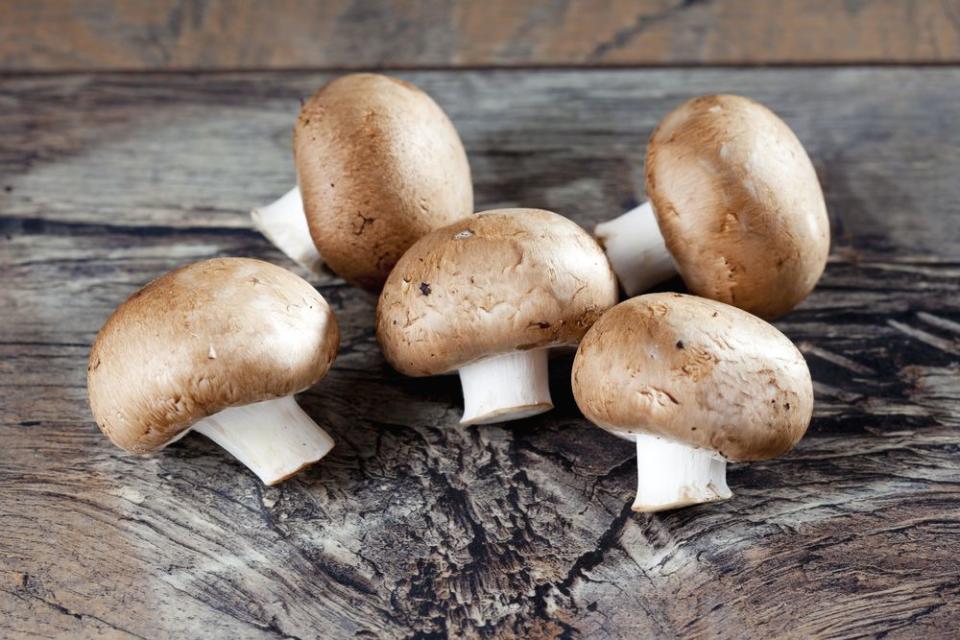
A cremini mushroom is a younger portabella, which explains its top alias: Baby bella. They’re darker and have a more robust flavor than white mushrooms, but will substitute for their kin in a pinch. Cremini are team players and work well with meat or pasta dishes.
Recipes to try: Garlic-Caper Roasted Mushrooms, Cremini Mushroom Meat Loaf, Orzo with Pecorino and Mushrooms.
Chanterelle Mushroom
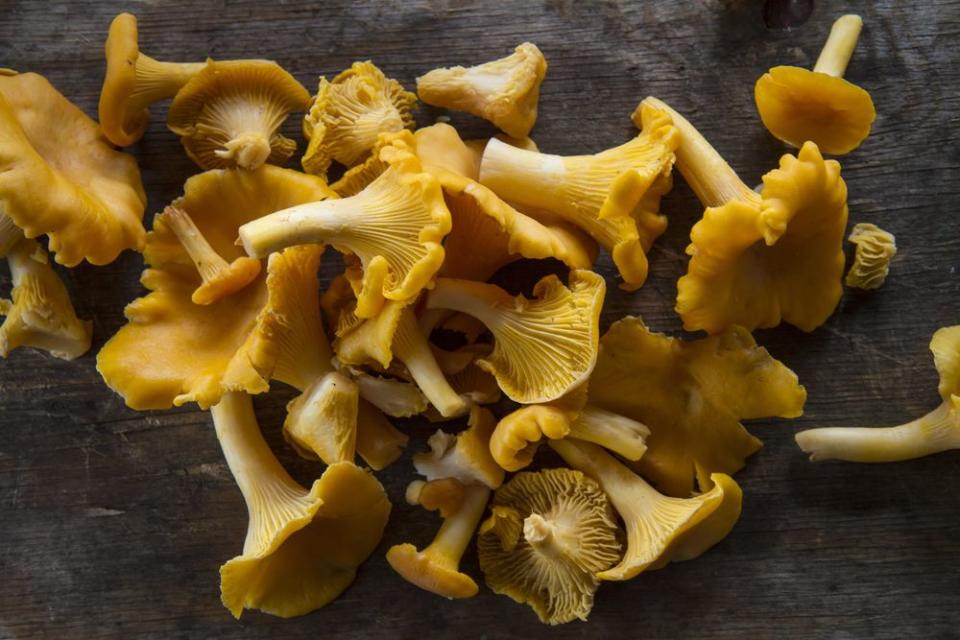
Chanterelle mushrooms typically have a golden color and a peppery taste. Since they’re primarily foraged, chanterelles belong to the “wild mushroom” category. You’ll find them in thick forests such as those in the Pacific Northwest or Central Europe. Chanterelles boast a more powerful flavor than other mushroom varieties and triumph when they’re sauteéd or dried.
Recipes to try: Green Beans with Chanterelles and Cipollini, Leek and Chanterelle Tart, Chicken Fricassee with Parsley Roots and Chanterelle Mushrooms.
Wood Ear Mushroom
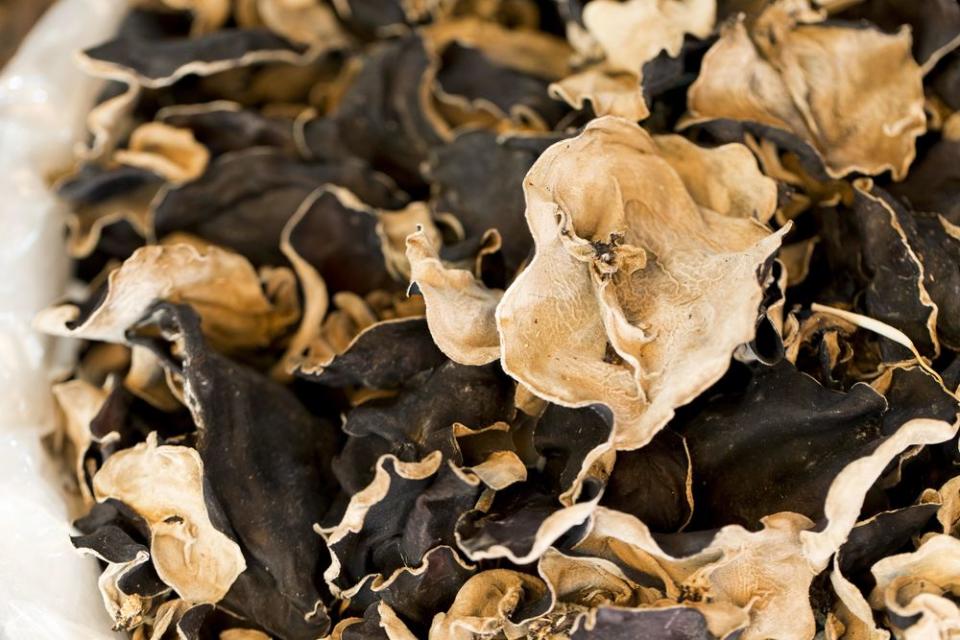
Wood ear mushrooms grow on living or decaying wood on a number of continents, but are an extremely popular ingredient in Chinese cuisine. This ear-shaped variety is mild to the point where it’s almost flavorless, and will absorb flavors from other, more powerful ingredients. As a result, they’re used to add texture to soups, stir-frys, and more.
Recipes to try: Chinese Wide Noodles with Barbecue Pork and Dried Mushrooms, Steamed Salmon with Savory Black Bean Sauce, Mushroom Potstickers.
Shiitake Mushroom
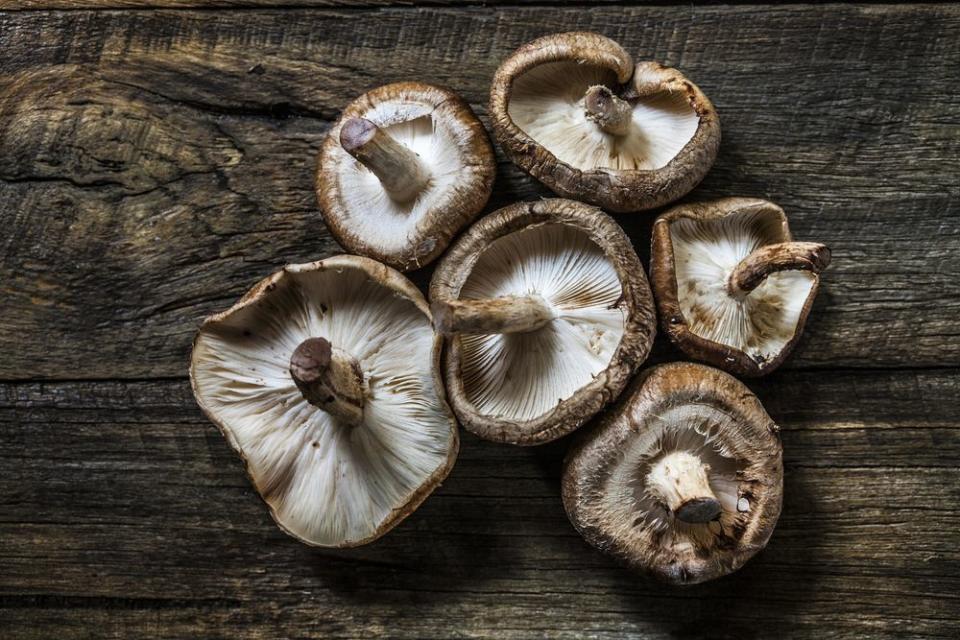
Also known as black mushrooms, shiitake mushrooms are best known for their domed, woodsy caps and earthy taste. Shiitakes grow on decaying logs, but have been cultivated for centuries. They’re frequently used in East Asian cuisines, notably Japanese and Chinese, but are grown and enjoyed all over the world. Shiitake stems are tough, so they’re best used for making broth.
Recipes to try: Shiitake-and-Swiss Chard Soup with Hand-Cut Noodles, Shiitake-and-Sesame Bok Choy, Kale, Swiss, and Shiitake Toast.
Oyster Mushroom
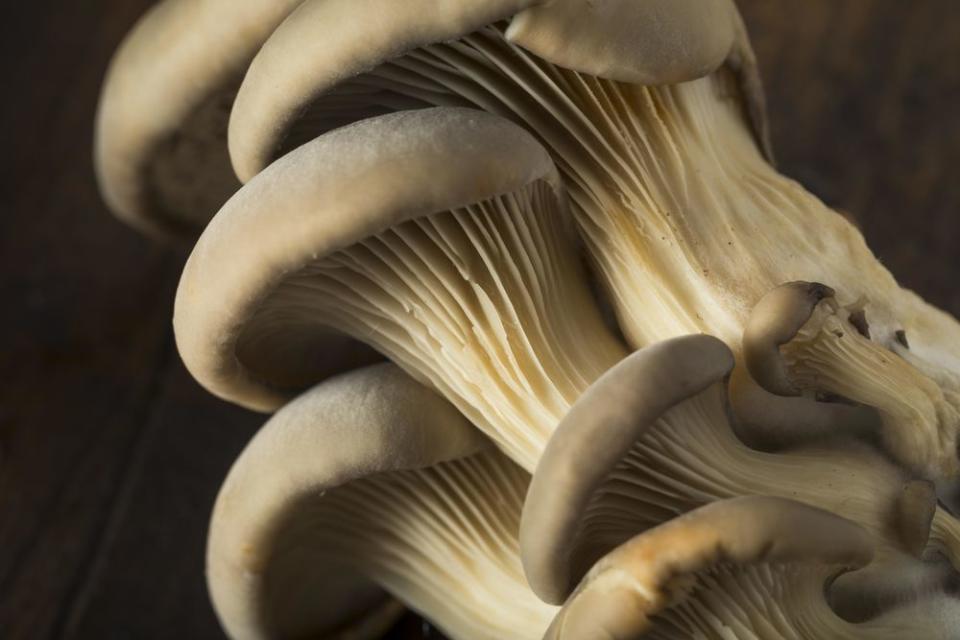
Oyster mushrooms get their name from their texture, which mimics that of the bivalve. They have broad caps that are thinner than other mushroom varieties and feature a mild taste. They grow on trees in temperate and tropical climates around the world and are among the most popular cultivated mushroom varieties on the planet.
Recipes to try: White Pizza with Oyster Mushrooms and Gorgonzola, Penne with Oyster Mushrooms, Prosciutto, and Mint, Polenta with Smoky Mushroom Ragout.
King Oyster Mushroom

Also known as king trumpets, king oysters are a species sharing a genus with generic oyster mushrooms. Despite the similar names, king oysters are vastly different, with large, meaty stems and small caps. Cooked king oyster mushrooms mimic the taste of abalone and have been tied to lower cholesterol levels.
Recipes to try: Roasted King Oyster Mushrooms.
Enoki Mushroom
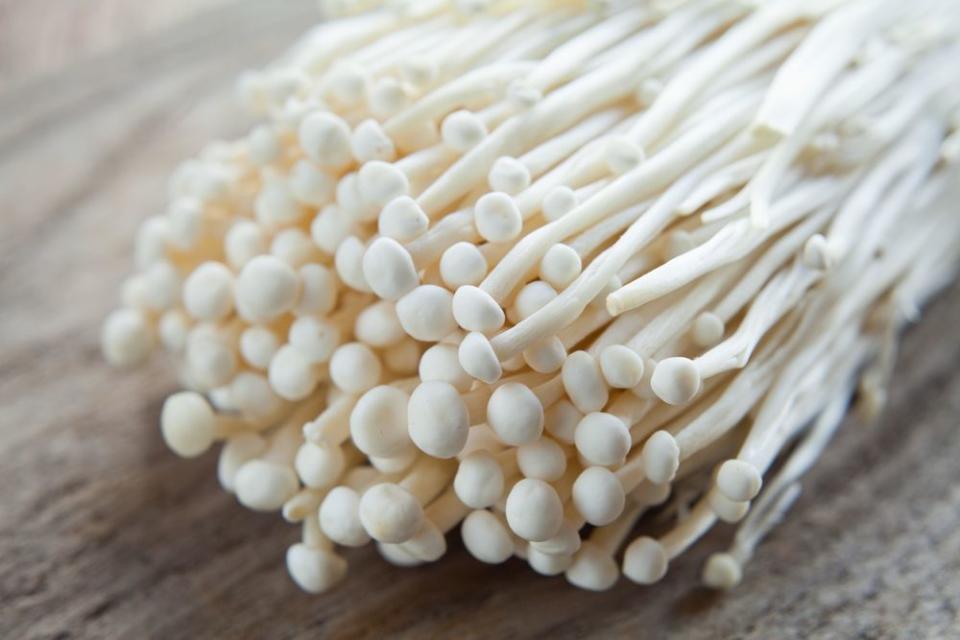
Cultivated enokitake mushrooms (enoki for short) are delicate clusters of long, thin stems and teeny tiny caps. You’ll most likely see them in East Asian soups. When raw, they have a crisp texture that works nicely in salads.
Recipes to try: Miso Soup with Enoki Mushrooms, Mushroom Risotto, Mâche with Summer Lemon Cucumbers and Lychee.
Maitake Mushroom
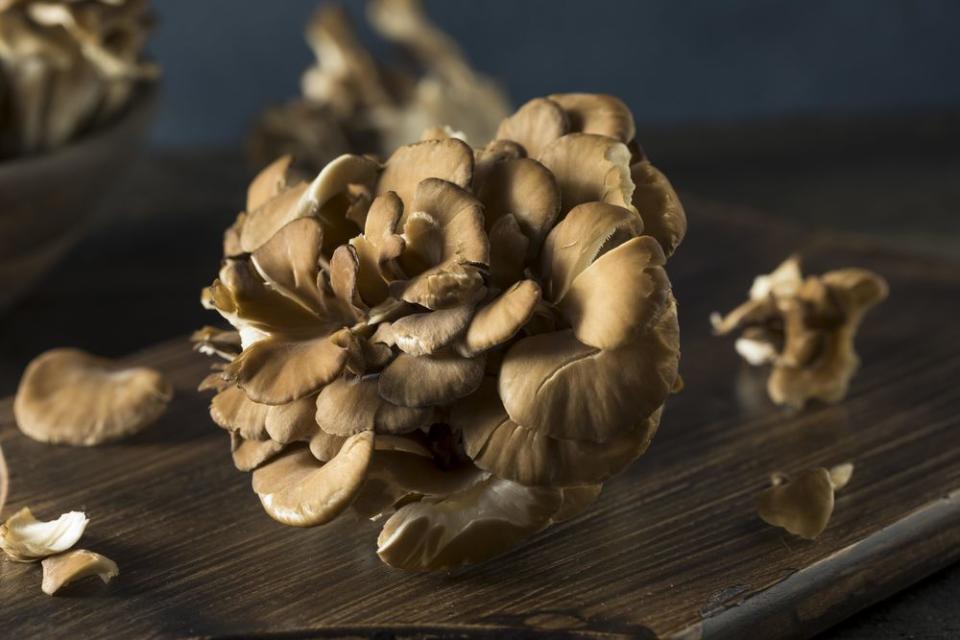
Also known of hen of the woods and ram’s head, maitake mushrooms are native to Japan and the Northwest U.S. In East Asian countries, they’re popular both as ingredients and medicine, and both uses have caught on in the U.S. as well.
Recipes to try: Cauliflower Steaks with Maitake Mushrooms and Browned Butter-Caper Sauce, Mai-Tacos, Maitake Mushrooms with Thyme and Sherry.
Porcini Mushroom
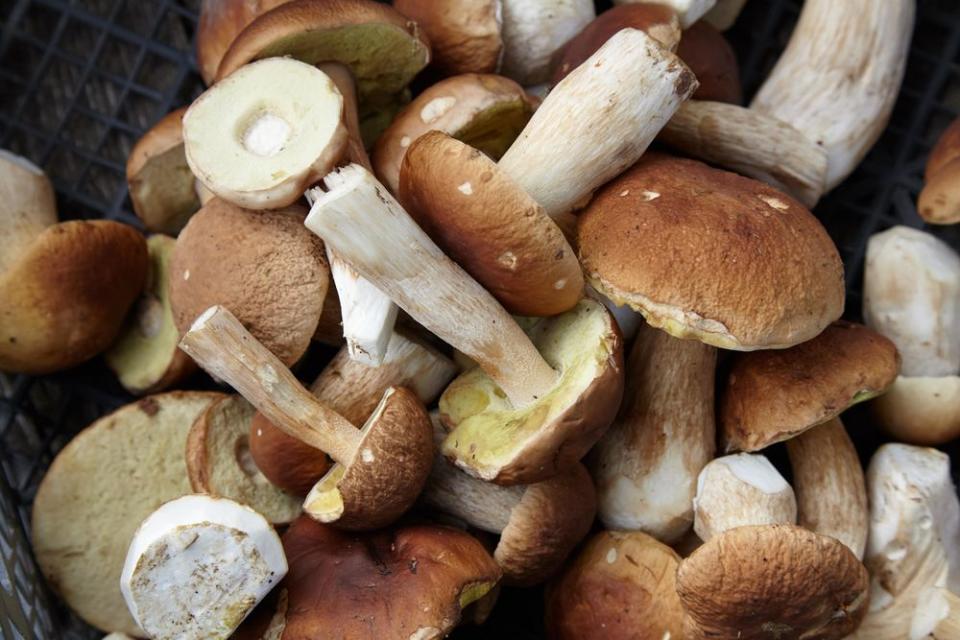
Porcini mushrooms are one of the most beloved mushroom varieties on the planet and popular among a number of European cuisines. They’re difficult to grow, especially year-round, so they’re usually available dried or canned. Of course, that also makes them pricier.
Recipes to try: Porcini, Artichoke, and Parsley Salad, Risotto with Porcini Mushrooms and Mascarpone, Porcini-Dusted Chicken Scaloppine.
Morel Mushroom
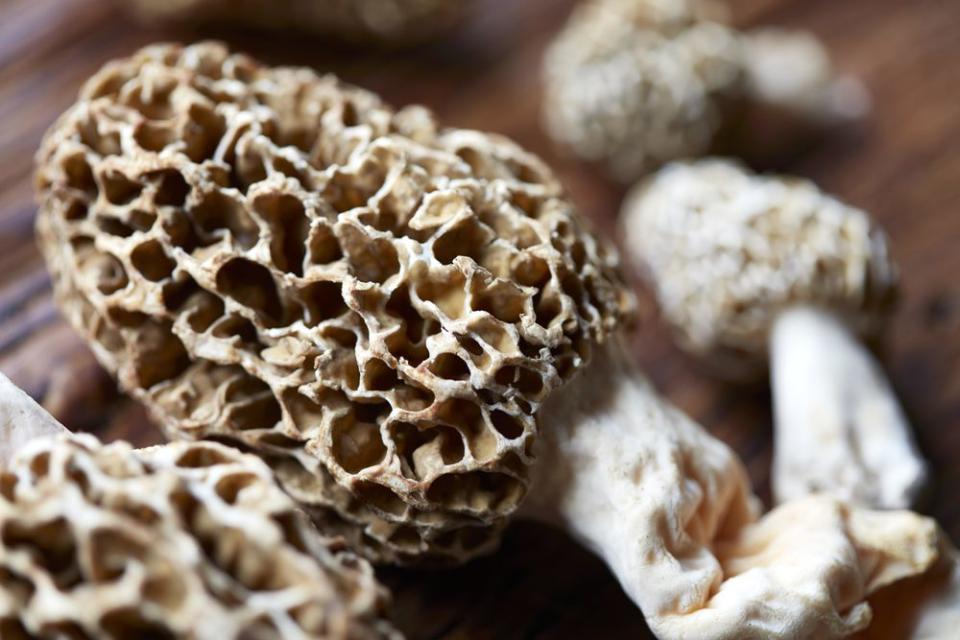
Morel mushrooms have a spongy appearance and dense, meaty texture thanks to their honeycomb-like structure. The flavor, however, borders earthy and nutty. Like porcini mushrooms, morels are difficult to cultivate and have a hefty price tag. Fortunately, you only need a small amount to capitalize on their flavor.
Recipes to try: Chicken Fricassee with Cream and Morel Mushrooms, Farfalle with Fava Beans, Morel Mushrooms, and Mascarpone, Spring Onion and Morel Galette.
Beech Mushroom
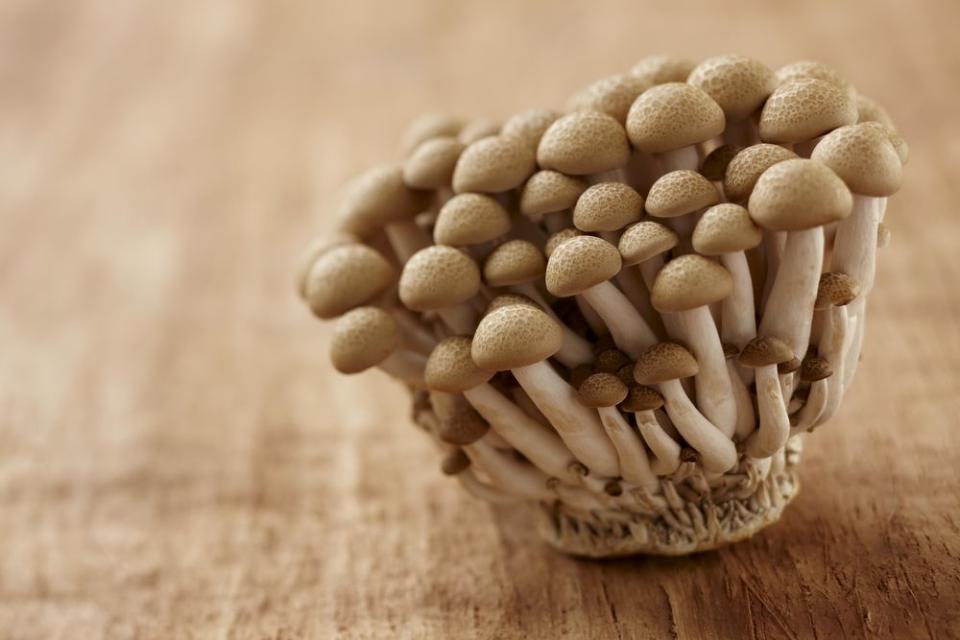
Beech mushrooms are native to East Asia, where they’re known as shimeji, and come in two varieties: Brown and white. They have a bitter taste when raw, but cooked, they become nutty with a slightly crunchy texture, making them popular in stir-frys, soups, and even slow-roasted.
Recipes to try: Bok Choy and Mushroom Stir-Fry.

